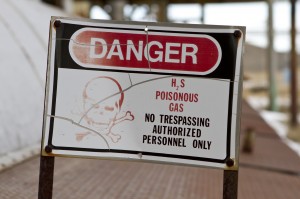Safety Signs of the Times
Categories: Safety Consultation
SAFETY SIGNS OF THE TIMES
“The single biggest problem in communication is the illusion that it has taken place.” – George Bernard Shaw
The signs are changing.
Around the world, numbers posted along strips of compressed asphalt announce a road’s maximum speed limit. Never mind the conversion from miles to kilometers or vice versa, the universal message of “this number = maximum allowed” is conveyed. And drivers everywhere know that exceeding the speed limit may result in flashing lights materializing in the rear view mirror.
In today’s safety world, the Hazard Communication Standard follows the same principle. Anyone from anywhere should be able to view a warning sign, understand its message, and know what to do with the information. This, in turn, educates workers on the consequences for failing to heed a warning.
Simple, right?
So it would seem, until fifteen different people create fifteen different versions of the same warning sign based on subjective interpretations of its intended purpose related not only to a sign’s physical characteristics but also to its effectiveness in avoiding injuries and fatalities in the first place.
What? Wait a minute – this just got complicated. And complicated can mean “miscommunicated.”
The new Global Harmonization Standard regulations intend to eliminate that pitfall by using nationally and internationally standardized graphics, symbols and colors to better convey safety messages in today’s workplace, regardless of a worker’s spot in the world. And knowledge of existing hazards is a proven method of mitigating injuries (or worse) in the workplace. Good news for employers!
So in developing safety sign systems, remember that effective communication is critical to safety and that safety signs, labels, tags and markings are the visual tools used to demonstrate your care and concern for the health and safety of your employees, guests, visitors, subcontractors and temporary workers. By doing the following: 1) assessing what you have; 2) selecting the right signs for the hazards present; 3) choosing the right location, size and style; and, 4) choosing the right materials, you are on the road to helping people not only know about a hazard, but also fulfilling the right for people to understand the hazard.
Thus, overcoming language barriers, drawing attention to safety signs, and ensuring the message stands out from all of the other posted signage help people navigate their workplace. Because, in the end, nobody wants to see an OSHA fine or legal liability materialize behind them.



